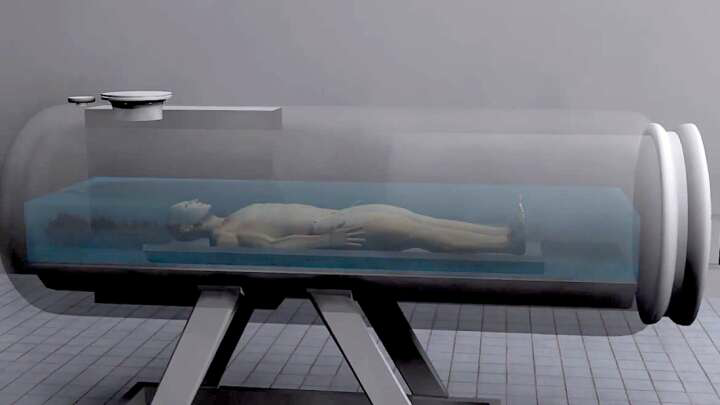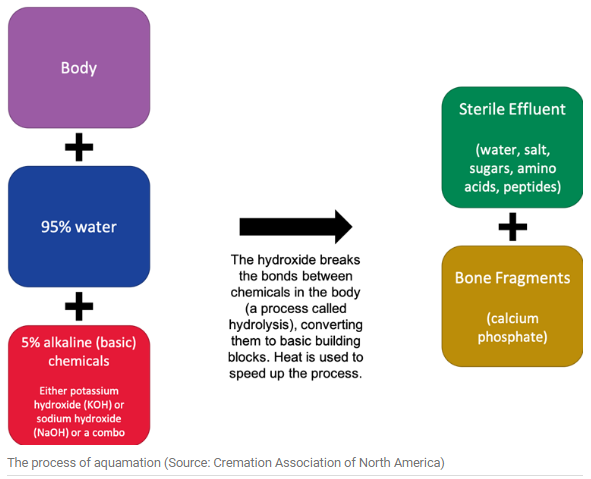AQUAMATION

Disclaimer: Copyright infringement not intended.
Context
- The body of Nobel Peace Prize winning Anglican archbishop and anti-apartheid campaigner Desmond Tutu underwent aquamation, a green alternative to traditional cremation methods.
What is aquamation?
- Aquamation, or alkaline hydrolysis, is a process in which the body of the deceased is immersed for a few hours in a mixture of water and a strong alkali in a pressurized metal cylinder and heated to around 150 degree centigrade.
- The combination of gentle water flow, temperature and alkalinity accentuate the breakdown of the organic materials.

How long has alkaline hydrolysis been in use?
- The process was developed and patented in 1888 by Amos Herbert Hanson, a farmer who was trying to develop an ingenious way to make fertilizer from animal carcasses.
- The first commercial system was installed at Albany Medical College in 1993.
- Thereafter, the process continued to be in use by hospitals and universities with donated body programmes.
Significance
- Considered to be an environmentally friendly way to dispose of a body, the process is also known as water cremation, green cremation or chemical cremation.
- The process leaves behind bone fragments and a neutral liquid called effluent.
- The decomposition that occurs in alkaline hydrolysis is the same as that which occurs during burial, just sped up dramatically by the chemicals.
- The effluent is sterile, and contains salts, sugars, amino acids and peptides.
- There is no tissue and no DNA left after the process completes.
- This effluent is discharged with all other wastewater, and is a welcome addition to the water systems.



1.png)
